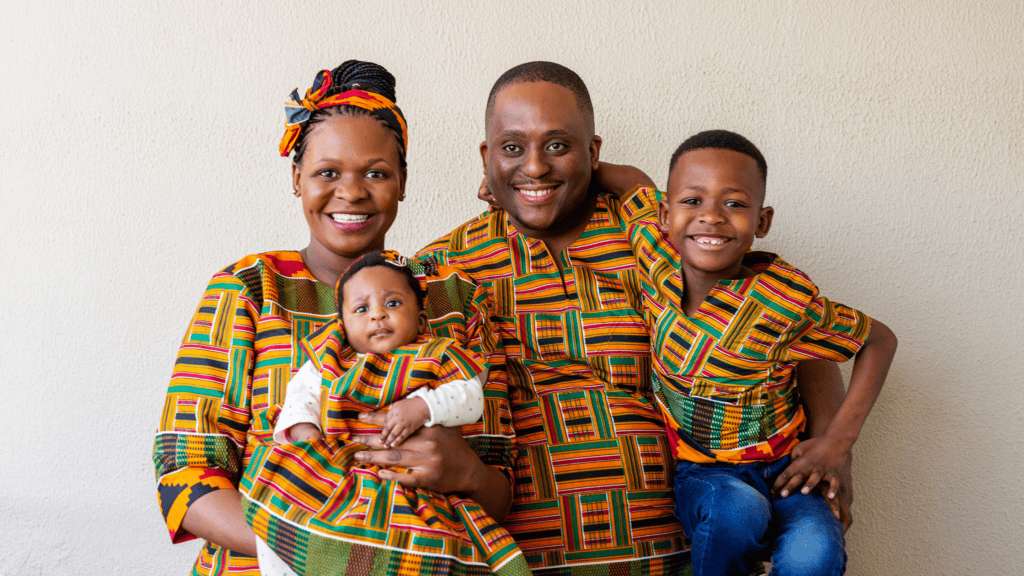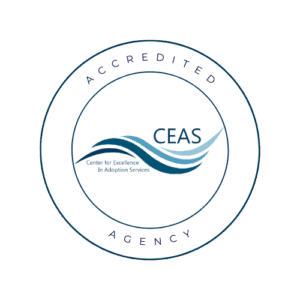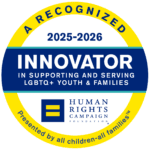So you’re interested in adoption, but aren’t sure whether you want to adopt within the US or from another country. What are the differences between international adoption and domestic adoption? How do you choose between the two? What questions should you be asking yourself?
We have been helping families make these decisions for over 115 years. We asked our Chief of International Adoption Programs, Lauren Jiang, and our Senior Director of Domestic Adoption Programs, Monica Baker, to help us understand the key differences and decision-making factors between these two pathways to growing your family.
The process to discover which path is right for you can be a difficult one. It means asking yourself a lot of hard questions, and being honest about what your desires and capabilities are.
While this article isn’t comprehensive, we hope it provides a helpful starting point for your adoption journey. We encourage you to reach out if you need support in your decision-making process. Contact us at [email protected] or give us a call at 212-257-0937.

Questions to Ask Yourself
· Are you interested in adopting an infant, an older child, or siblings?
· Would you be open to having ongoing contact with the birth family of your child?
Pathways to Adoption

Domestic Adoption Pathways
Agency Adoption: Involves working with a licensed adoption agency (like Spence-Chapin) that matches you with a child and provides support throughout the process. Many agencies provide comprehensive support, from pre-placement planning sessions to post-placement counseling, coaching, and support groups.
Private Attorney Adoption: A private adoption arranged with the help of an attorney, typically involving a direct relationship with the birth parents.
Foster Care Adoption: Involves adopting children from the U.S. foster care system. Many of these children are older or part of sibling groups.
The Path to International Adoption
For international adoption, all families must work with a U.S.-based Hague-accredited agency which places children from your chosen country. If this agency is out of your state, you will additionally work with an agency licensed in your state for your home study. The U.S. State Department oversees international adoptions, and accredited agencies must comply with both U.S. and international laws.
Key Differences Between Domestic Adoption & International Adoption
Age
Domestic Adoption often involves infants or very young children. If you are interested in adopting an older child in the US, you would want to look into adopting through the foster care system.
Through International Adoption, you will most likely be placed with a toddler, a preschooler, or a school-age child. Keeping siblings together is a priority, and for families open to adopting a sibling pair, international programs may be a good fit for you.
Child Background & Culture
When you choose to adopt domestically, most often you are choosing to adopt an infant. This means there is less time for the child to experience trauma and neglect before joining your family, compared to an older child. With this said, adoption can be traumatic regardless of how old the child is when they enter your family, and anyone adopting should be equipped with trauma-informed parenting techniques. With domestic adoption, you also have a higher likelihood of having access to your child’s birth family’s medical history and genetic predispositions. However, having some unknowns in the birth family’s medical history is common.

Before a child becomes eligible for international adoption, all domestic options for reunification or for adoption within their birth country must be explored for a child. As such efforts take time, international adoptions are typically children 2+ years old. This means you might have more insight into their developmental trajectory, compared to adopting an infant. It might be less likely, however, that you have access to their ancestry or family’s medical history, particularly in cases in which the child entered protection due to a history of abandonment.
International adoption is a profound opportunity to become a multicultural family and integrate your child’s birth culture into your family culture. It’s critical to cultivate cultural competence and understand the importance of celebrating your child’s culture.
Open vs Closed Adoption
Open adoption is when adoptive parents and birth parents agree to a certain level of continued contact. The level of contact varies, and can be anything from photos and messages, to visits and direct contact.
In domestic adoptions, open adoption is increasingly more common—as we learn how beneficial it can be for adoptive parents, birth parents, and most importantly—the children themselves. The Donaldson Research Institute has conducted multiple longitudinal studies, and we encourage you to take a look at what the experts have to say.
When adopting internationally, closed adoptions are more common. This may be due to country law regarding privacy in adoption, or might be that the parents of many children waiting to be adopted are deceased, missing, or are unable to stay in contact with their child’s adoptive family due to social stigmas or lack of resources.
It is always possible that even in closed adoptions contact with birth family may be established at a later point. Some states and countries allow adoptees in adulthood to access previously sealed records, or may even have structures in place to support an adoptee in adulthood to conduct a search. Additionally, with the increased prevalence of DNA testing as well as the expanded use of social media, birth family connections might be found more frequently.
Special Needs Adoption
In the US, many adoption agencies have a designated program for placing children that have special needs or are medically fragile with families best equipped to care for them. “Special Needs” in these types of programs can include: genetic disorders, brain anomaly, rare syndromes, and more. Spence-Chapin waives professional service fees to offset the cost of caring for a medically fragile child.

In international adoptions, many children are described as having “special needs”, but this is a broad term and does not necessarily mean they are medically fragile. These special characteristics can range from social, emotional, developmental, educational, behavioral, physical, or medical needs; a child’s age or even having a sibling could be a special need. We also see that many children have histories of abuse, neglect, and trauma, impacting their developmental, emotional and behavioral needs.
There are many families who do not start out educated on these needs but would make wonderful parents. We encourage all parents considering adopting a child internationally to learn more about therapeutic parenting techniques, but to also understand that they do not need to be experts in trauma or special needs to adopt a child from another country—they just need to be willing to learn. Spence-Chapin provides in-depth training through the pre-adoption process to ensure that families are as prepared as possible to meet the individual needs of the child placed with them.
Cost
Costs in the adoption process depend on which path you choose (agency, attorney, foster care, or international) and which professional you choose to assist you. To give you an idea of costs, we can provide our own.
Our domestic adoption program as of 2024 costs $51,300. This fee covers facilitation of the matching process, home study fees, counseling and support for all parties involved, legal services, birth parent medical and living expenses, interim care for infants, and much more.
Total costs in our international adoption programs as of 2024 range from $32,140 – $52,963, including travel, immigration, country fees, and third-party costs.1 It’s important to ask the professionals you are interested in working with for a cost breakdown—as all can vary greatly between one another. We invite you to visit our International Adoption Inquiry Packet, which provides sample Master Fee Agreements and Fee disclosures for your review.
A piece of good news—the Federal Adoption Tax Credit can greatly offset the cost of any adoption (domestic or international). Learn more about that here. Additionally, Spence-Chapin partners with Your Adoption Finance Coach so that families adopting through our programs can receive individualized financial planning support, including help applying for adoption grants!
Timing & Process
Both domestic and international adoption can be a multi-year process. Timeline can be influenced by a number of factors – from how quickly you complete your paperwork, to how long state or country authorities take to process clearances or other approvals, to how open you are with respect to a child’s characteristics like age or special needs status.
A critical step before applying to an adoption program is to learn about the range of pathways and determine the right fit for your family. To support in that learning, Spence-Chapin requires families to attend an introductory webinar or in-person event before submitting an application.

All adoptions begin with submitting an adoption program application. Once an application is approved, you will then complete a home study—which is comprised of paperwork, trainings, and interviews. A home study is a multi-month process. All adoptions, regardless of which path you choose, require a home study.
If you decide to pursue domestic adoption, it can take an average of 24-36 months to be matched with a child once your home study is approved. The matching process for domestic infant adoption is birth-parent driven, meaning you will wait until a birth parent resonates with your waiting family profile and decides to move forward with you.
In international adoptions, families may wait a few months or a few years before they receive a referral for a child that they have been deemed to be a match for, based off the child characteristics they are open to and approved for within the home study. After receiving a referral, families then wait for multiple governmental approvals which can take anywhere from 3-12 months. Then it’s time to travel to your child’s birth country. We prepare families to be in-country for anywhere from 4-12 weeks or more depending on the country program. Some country programs require more than one trip.
In general, international adoption is a multi-year process. While we do see average timeframes for certain parts of the adoption process, it’s important to note that timeframes in entirety are challenging to predict; the length of each family’s adoption can be unique and individual to them!
Travel
A key difference between international and domestic adoption is the need to travel. In domestic adoptions, you might need to travel to the state where your child is born and stay for 1-2 weeks after your child is placed with you.

With international adoption, you will need to travel to your child’s birth country and stay for anywhere from 4 to 12 weeks or more. Once in-country, the child is placed with their prospective adoptive parents soon after arrival and there is a bonding period of typically one week before the legal process can proceed. This bonding period is an incredible opportunity to live with your child in their country of origin, and experience the rich cultural history that is a part of who they are!
The adoption will be finalized in court in that country and you become your child’s legal parent, but there are additional bureaucratic steps that must be taken (new birth certificate, passport and visa) before the child can travel to the U.S.. Children adopted internationally, from Hague countries, automatically become US citizens upon arrival to the US.
Eligibility
There are different eligibility requirements for each state, and we encourage you to contact adoption agencies or attorneys for more information. If you would like to reach out to us at Spence-Chapin, you can email [email protected] or call (212)-369-0300.
The Child Welfare Information Gateway is also a great resource for adoption laws and requirements by state: https://www.childwelfare.gov/resources/states-territories-tribes/
Across the US, there are a few general requirements:
- You need to be a US citizen or in legal status in the US.
- If you are married, you must jointly adopt the child, and your spouse must also be either a U.S. citizen or in legal status in the US.
- You must meet certain requirements that will determine your suitability as a prospective adoptive parent, like criminal background checks, fingerprinting, and a home study.

If you’re considering international adoption, some countries include parameters around age, marital status, health background, sexual orientation, among others.
Because international adoption is a form of immigration itself, United States Citizenship and Immigration Services, or “USCIS,” requires that one adoptive parent – or the sole applicant – be a U.S. citizen.
We often hear from parents that they don’t think they will be eligible for international adoption because of their lifestyle or background. We’re happy to confirm that there are adoption pathways for all types of families, including applicants in their 20s to late 50s, single men & single women, married and unmarried couples, LGBTQ+ applicants, and families of all backgrounds, races, ethnicities, and of any religion or of no religious faith.
Resources
International Adoption Resources
There are many ways families can begin preparing themselves for international adoption! We invite you to listen to Spence-Chapin’s Podcast to hear from adopted people, birth parents, adoptive parents, and adoption professionals. The State Department has in-depth information about the intercountry adoption process, eligibility, and country statistics.
National Council For Adoption, Adoption Learning Partners, Creating a Family, Families Rising, and Raise The Future can be great educational resources and tools for families seeking international adoption pathways. Gay and queer men can also access a range of resources via Gays with Kids. We also recommend the book “The Connected Child” by Karyn Purvis.
Domestic Adoption Resources
Spence-Chapin’s Podcast is also a great place to learn more about domestic adoption, and gather perspectives from all parts of the adoption constellation. The National Council For Adoption is also a great resource for both domestic and international adoption pathways.
For families interested in adopting domestically through foster care, www.AdoptUSkids.org has an overview of waiting children and is a great place to learn more about the process.
And if you’re interested in exploring private attorney adoption, The Academy of Adoption and Assisted Reproduction Attorneys (AAAA) is an organization of nearly 500 highly vetted attorneys dedicated to the competent and ethical practice of adoption and assisted reproduction law.
We also recommend the book, “The Open-Hearted Way to Open Adoption” by Lori Holden.






